Select Language

By Tetsushi Kajimoto
TOKYO (Reuters) - Japan's exports grew for a third straight month in February demand improved in the U.S., China and the European Union, offering some hope for policymakers seeking to revive growth after weak performance last year.
Exports rose 7.8% in February from the same month a year ago, Ministry of Finance data showed on Thursday, faster than the 5.3% gain expected by economists in a Reuters poll.
The trade data comes days after the central bank ditched years of unconventional easing in a shift towards normalising policy.
The Bank of Japan ended eight years of negative interest rates and other remnants of its unorthodox policy on Tuesday, making a historic shift away from decades of massive monetary stimulus. But it is expected to keep rates around zero for some time to support fragile growth.
Exports have been a source of concern for policymakers who worry about the fragile recovery in the world's fourth-largest economy, which narrowly dodged recession late last year.
Imports rose 0.5% year-on-year in February versus the median estimate for a 2.2% increase.
The trade balance came to a deficit of 379.4 billion yen ($2.52 billion), versus a median estimate for a deficit of 810.2 billion yen.
A Reuters monthly poll showed earlier on Thursday that big Japanese firms' confidence rebounded to a three-month high in March while the service-sector mood hit a seven-month high.
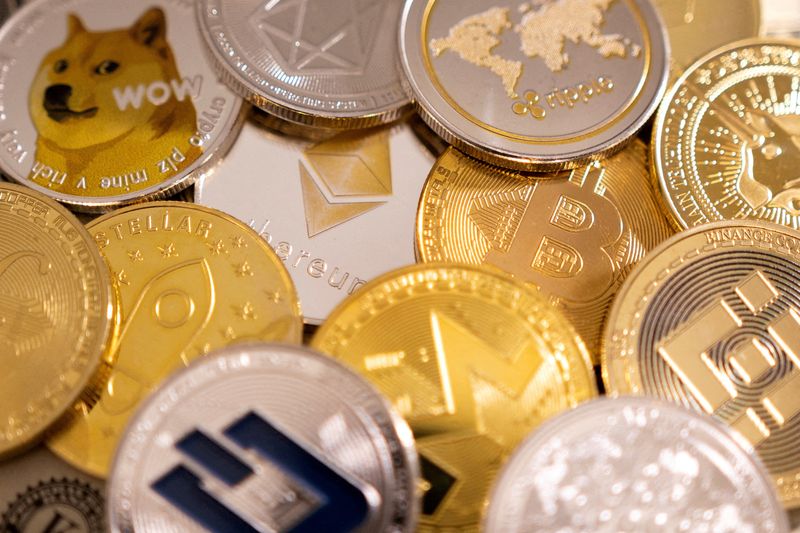
By Stephanie Kelly
NEW YORK (Reuters) - The cryptocurrency industry, a new financial force in the 2024 U.S. election cycle, is surveying candidates for Congress on their views around the digital asset, as the political arm of the movement gains tens of thousands more followers and adds to its war chest.
The survey from the Stand With Crypto Alliance, an advocacy group that aims to organize voters who own crypto and influence public opinion, is a way for a young industry like crypto to engage in political activity in lieu of trade organizations, said Olivia Buckley of OpenSecrets, a research group that tracks money in U.S. politics.
Ultimately candidates who answer the survey in ways the industry deems positive may see support from groups that want to boost crypto-friendly candidates.
Pro-crypto non-profits have been appearing in greater numbers over the past few years, Buckley said.
"Crypto regulation at the federal level remains very much contested and murky, so seeing which candidates can garner support from the industry could be telling as far as what's to come in Congress," she added.
Over a dozen candidates have already filled out the survey, including those from California, Alabama, Texas, Indiana and Maryland, according to Stand With Crypto, though the group declined to provide names.
It plans to push the survey out to candidates of the 468 seats in Congress up for election in November, the group told Reuters.
"It's for crypto advocates and the crypto community to understand where their policymakers, elected officials and candidates in federal races stand on the issue," said Nick Carr, chief strategist for Stand With Crypto.
The survey, seen by Reuters, asks questions such as whether a candidate believes cryptocurrencies like Bitcoin will play a major role in technological innovation, and whether a candidate believes it is important for the U.S. to modernize the regulatory environment for crypto.
It also asks whether a candidate would vote in favor of certain legislation, such as a bill introduced to the House of Representatives last year that would establish a regulatory framework for digital assets.
Stand With Crypto's member count has grown to 370,000 as of Wednesday, up from 315,000 just before March 5's Super Tuesday contests, according to its website. The group was launched in part by Coinbase (NASDAQ:COIN), an online platform for buying and selling crypto.
Pro-crypto candidates are already receiving support from three new super PACs - Fairshake, Defend American Jobs and Protect Progress - that put millions of dollars towards Super Tuesday races.
Collectively, the three super PACs have spent more than $21 million in independent expenditures this election cycle, according to OpenSecrets.
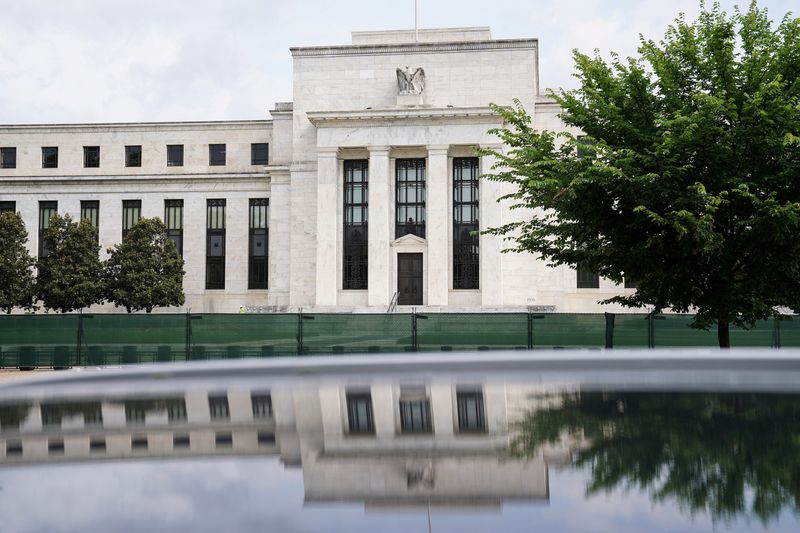
Investing.com -- The Federal Reserve kept rates steady on Wednesday, and maintained forecasts for three rate-cuts this year, pointing to the central bank’s confidence that the recent strength in inflation is unlikely to derail the progress made so far.
The Federal Open Market Committee, the FOMC, kept its benchmark rate in a range of 5.25% to 5.5%.
The decision to keep rates steady for the fifth meeting in a row was widely expected as the Fed chair Jerome Powell previously hinted that March was too soon for the members to have enough confidence from incoming economic data to cut rates.
Fed members continue to see the benchmark rate falling to 4.6% next year, suggesting three rate cuts in 2024, unchanged from the prior projection in December. For 2025 and 2026, however, the Fed sees fewer rate cuts, forecasting rates to fall to 3.9% next year and 3.1% in 2026, up from prior forecasts of 3.6% and 2.9%, respectively.
Following the decision, some on Wall Street continued to call for just two cuts this year.
"Our FOMC view is unchanged on this communication. Our baseline case remains for 50 bps of cuts in 2024 and a further 50 bps in 2025. We expect the first cut in July with risks tilted towards a later start date," David Doyle, head of economics at Macquarie said in a note.
The unchanged decision on the rate path for 2024 comes even as Fed members upgraded their forecasts for inflation and growth this year.
The core personal consumption expenditures price index, the Fed’s preferred measure of inflation, is forecast to be 2.6% in 2024, up from a prior forecast of 2.4%. For 2025 and 2026, inflation is estimated to be 2.2% and 2% unchanged from the prior forecast.
The moderate uptick in the inflation outlook for 2024 suggest that recent upside surprise in inflation data haven't yet shaken the Fed's confidence that a stronger economy and labor market aren't likely to spark another wave of inflation.
Fed members now see the economic growth, or gross domestic product, at 2.1% this year, up from a prior forecast of 1.4%, before slowing to 2% in the 2025 and 2026 from 1.8% and 1.9%, respectively.
The labor market, meanwhile, is expected to remain robust, with the unemployment rate seen at 4% this year, down from a prior projection of 4.1%.
"The downward revision to 2024 unemployment to 4.0% makes it likely the job market will soften more rapidly than officials expect," Citi said in a note.
At the press conference that followed the decision, Federal Reserve Chairman Jerome Powell said the fed act sooner on rate cuts if the labor market unexpectedly weakened.
"If there were significant weakening in the data, particularly in the labour market, that could also be a reason for us to begin the process of reducing rates," Powell said.
The Fed chief also said the balance sheet run-off would likely slow "fairly soon," which markets interpreted as as "dovish," Doyle added.
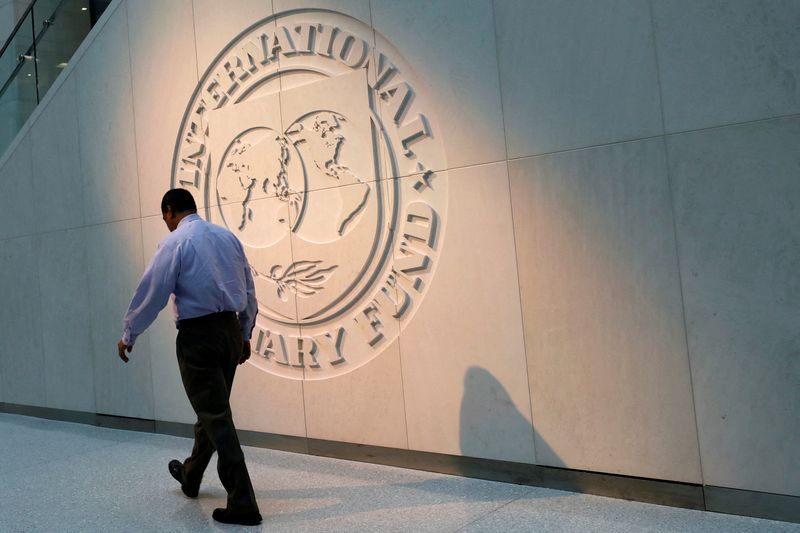
By Ariba Shahid and Asif Shahzad
ISLAMABAD (Reuters) -Pakistan and the International Monetary Fund on Wednesday reached a staff level agreement which, if approved by its board, will disburse $1.1 billion for the debt-ridden South Asian economy, the global lender said.
The funds are the final tranche of a $3 billion last-gasp rescue package Pakistan had secured last summer, which averted a sovereign debt default. Islamabad is also seeking another long-term bailout.
"The IMF team has reached a staff-level agreement with the Pakistani authorities on the second and final review of Pakistan's stabilization program," the IMF said in a statement.
"This agreement is subject to approval by the IMF's Executive Board," it added. The agreement expires on April 11.
The deal comes after the IMF mission held five days of talks with Pakistani officials to review the fiscal consolidation benchmarks set for the loan.
Most Pakistan dollar bonds were trading higher on Wednesday after the deal was announced.
The 2027-maturing bond was up 0.25 cents at 83.957 cents on the dollar while the 2025 bond which was up 0.21 cents at 92.023 cents on the dollar.
Pakistan's Finance Minister Muhammad Aurangzeb had said that Islamabad will seek another long-term bailout. The IMF said Pakistan had expressed interest in a deal, and that it would formulate a medium-term programme if Islamabad applies for one.
The government has not officially stated the size of the additional funding it is seeking through a successor programme, however Bloomberg reported in February that Pakistan planned to seek a new loan of at least $6 billion from the lender.
The debt-ridden economy, which shrank 0.2% last year and is expected to grow around 2% this year, has been under extreme stress with low reserves, a balance of payment crisis, inflation at 23%, policy interest rates at 22% and record depreciation of the local currency.
Ahead of the stand-by arrangement, Pakistan had to meet IMF conditions including revising its budget, and raising interest rates, generating revenues through more taxes and raising the price of electricity and gas, which fuelled inflation.

BANGKOK (Reuters) - Thailand's government is forging ahead with a 500 billion baht ($13.9 billion) handout scheme and may still need to borrow to finance it, a deputy finance minister said on Wednesday.
Julapun Amornvivat made the remarks in parliament, which began a three-day debate on a 3.48 trillion baht ($96.5 billion) budget bill for the 2024 fiscal year, aimed at reviving Southeast Asia's second-largest economy.
"We insist that it may be necessary to get a loan through a bill, but if there are any changes, we will probably seek approval from the members (of parliament) again," he said. "But the project will definitely go ahead".
The scheme would transfer 10,000 baht to 50 million Thais to spend in six months, but has been hounded by concerns over how it will be funded, with some experts calling it fiscally irresponsible.
Julapun also said the government hoped to achieve a balanced budget in an appropriate time.
The 2024 budget for the fiscal year ending September aims for a 9.3% rise in spending and a drop of 0.3% in the budget deficit to 693 billion baht from the previous year.
After the debate on the second and third readings of the budget, the budget will need further approval from the senate and the king.
The government has said the budget should be ready for use by early next month, delayed from the original start date of Oct. 1, 2023 due to prolonged political gridlock following a May election. A new government was formed in August.
($1 = 36.06 baht)
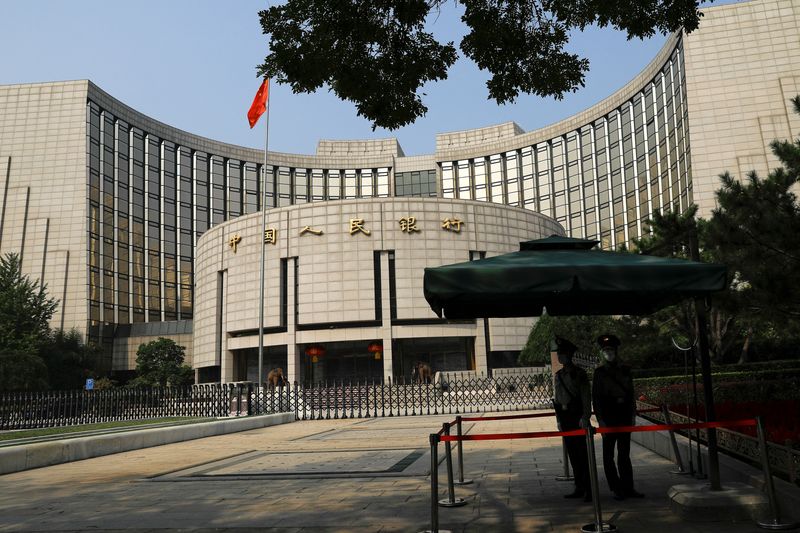
SHANGHAI/SINGAPORE (Reuters) -China left benchmark lending rates unchanged at a monthly fixing on Wednesday, in line with market expectations, after the central bank kept a key policy rate steady last week amid some signs of improvement in the broad economy.
WHY IT'S IMPORTANT
China has set an economic growth target of "around 5%" for 2024, a rate that economists say is ambitious and calls for more stimulus, including monetary and fiscal easing.
In particular, China needs to revive a battered property sector. Most new and outstanding loans in China are based on the one-year loan prime rate (LPR), while the five-year rate influences the pricing of mortgages.
But any sharp cuts to interest rates may put pressure on the yuan and banks whose net interest margins (NIMs) have been falling since last year.
BY THE NUMBERS
The one-year loan prime rate (LPR) was kept at 3.45%, while the five-year LPR was unchanged at 3.95%.
In a Reuters poll of 27 market watchers conducted this week, all respondents expected both rates would stay unchanged.
While China's factory output and retail sales beat expectations in the January-February period, property investment in China fell 9% year-on-year in the first two months of 2024, after a sharp 24% fall in December. Property sales also slid.
Credit growth has also slowed. Outstanding yuan loans grew 10.1% in February from a year earlier - the lowest on record.
CONTEXT
China's central bank left its medium-term lending facility (MLF) rate unchanged last week. The MLF rate serves as a guide for LPR, which is set by 20 designated commercial banks.
But PBOC Governor Pan Gongsheng said earlier this month that the bank would keep the yuan basically stable and sent a dovish message to the market by saying China had "rich monetary policy tools at its disposal."
Investors have since ramped up bets that authorities will roll out more monetary easing measures, including a further reduction to bank reserves, to support the economy.
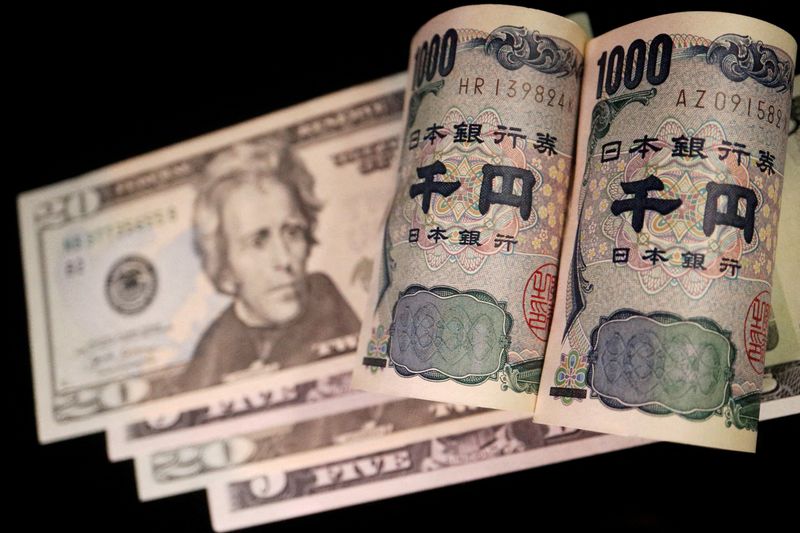
By Ankur Banerjee
SINGAPORE (Reuters) - The yen languished near a four-month low against the U.S. dollar and a 16-year trough against the euro on Wednesday, a day after the Bank of Japan's widely anticipated decision to end its negative interest rate policy.
While the Bank of Japan ushered in the country's first rate hike in 17 years, the central bank said it expected to maintain accommodative conditions for the time being, keeping pressure on the yen as U.S.-Japanese rate differentials remain stark.
On Wednesday, the yen weakened to a four-month low of 151.34 per dollar and was last off 0.30% at 151.28, with the multi-decade low of 151.94 within sight. The Asian currency fell 1% on Tuesday after the BOJ decision as most investors had already priced in a change.
Against the euro, yen weakened to 164.35, its lowest since 2008, while against the pound, yen weakened to 192.37, lowest since 2015. Japan markets are closed on Wednesday for a holiday.
"I think the focus is again around 152 levels," said Christopher Wong, currency strategist at OCBC. Wong said the move for dollar/yen in the near term will be more a function of U.S. rates, with the Federal Reserve decision due later on Wednesday.
In a historic shift from decades of massive monetary stimulus, the Japanese central bank on Tuesday ended eight years of negative interest rates and other remnants of unorthodox economic policy.
Daniela Hathorn, senior market analyst at Capital.com said BOJ Governor Kazuo Ueda’s dovish comments after the meeting were enough to end any post-decision bullish sentiment in the Japanese currency.
"The carry trade versus the major currencies continues to be in play and is expected to continue for a while," Hathorn said. "This means the yen is likely to see further weakness, especially if the other central banks continue to delay cutting rates."
The main spotlight for the day remains on the Fed and although the central bank is not expected to move, its economic projections and comments from Chair Jerome Powell will be in focus.
Last week's stronger than expected inflation reports led traders to reduce their bets on rate cuts this year, with markets now pricing in 73 basis points (bps) of easing this year. At the start of the year, traders were pricing in 150 bps of cuts.
Traders are pricing in a 59% chance of the Fed starting its easing cycle in June, the CME FedWatch tool showed, sharply lower than earlier expectations.
The dollar index, which measures the U.S currency against six rivals, rose to 0.019% to 103.87. The euro was down 0.03% to $1.0862.
The Australian dollar eased 0.08% to $0.652, while the New Zealand dollar fell 0.17% to $0.604.
Australia's central bank held interest rates steady on Tuesday as expected, while watering down a tightening bias to say that it was not ruling anything in or out on policy.

TOKYO (Reuters) -The Bank of Japan has made "the appropriate policy decision at the appropriate time", the head of Japan's biggest business lobby said, welcoming Governor Kazuo Ueda's move to hike interest rates for the first time in 17 years.
"I think the BOJ has caught the indications that a virtuous cycle between wages and prices has started," Keidanren Chairman Masakazu Tokura told reporters.
As widely expected, the BOJ announced on Tuesday it would end eight years of negative interest rates and other remnants of its unorthodox policy. But analysts expect it will keep rates stuck around zero for some time as a fragile economic recovery forces it to go slow on any further rise in borrowing costs.
The central bank's decision was preceded by news of stronger-than-expected pay rises by companies, raising hopes of higher household spending that would feed into more durable growth in the broader economy.
"Moderate price increases are favourable for the economy as a whole, and we like the fact that the revision was conducted with the 2% price stability target in sight," Ken Kobayashi, chairman of the Japan Chamber of Commerce and Industry, said in a statement.
With inflation having exceeded the BOJ's 2% target for well over a year, many market players had projected an end to negative interest rates either this month or next. In a sign future rate hikes will be moderate, the BOJ said that financial conditions will remain accommodative for the time being.
"As businesses and individuals, we will need to gradually prepare for a world with interest rates," Takeshi Niinami, chairman of the business lobby Keizai Doyukai who also heads brewer Suntory Holdings, said in a statement.
"Full-fledged growth of the Japanese economy will not be achieved by monetary policy alone," he added pointing to the need for companies to do more in areas such as improving productivity.
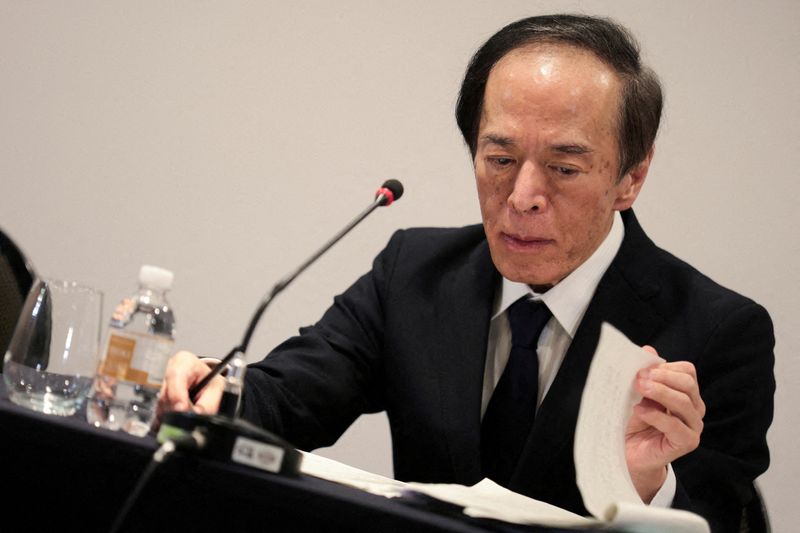
(Reuters) - The Bank of Japan ended eight years of negative interest rates and other remnants of its unorthodox policy on Tuesday, making a historic shift away from a focus of reflating growth with decades of massive monetary stimulus.
The shift makes Japan the last central bank to exit negative rates and ends an era in which policymakers around the world sought to prop up growth through cheap money and unconventional monetary tools.
Following are excerpts from BOJ Governor Kazuo Ueda's comments at his post-meeting news conference, which was conducted in Japanese, as translated by Reuters:
IMPACT OF CENTRAL BANK'S DECISION
"Today's decision will only lead to a 0.1% increase in short-term interest rates. We will also increase bond buying nimbly if there is a sharp rise in long-term rates. I don't think deposits or lending rates will rise sharply from today's decision." SHORT-TERM RATES IN LINE WITH ECONOMIC AND PRICE OUTLOOK
"We reverted to a normal monetary policy targeting short-term interest rates, as with other central banks. We will choose the appropriate level of short-term rates in line with our economic and price outlook. But in doing so, we need to be mindful that there is some distance for inflation expectations to reach 2%. When we focus on this gap, it's necessary to maintain accommodative monetary conditions even under a normal monetary policy framework."
HIGH CHANCES OF INFLATION IN TARGET RANGE
"The likelihood of inflation stably achieving our target has been heightening, including from January through March ... As a result, the likelihood reached a certain threshold that resulted in today's decision. If the likelihood heightens further and trend inflation accelerates a bit more, that will lead to a further increase in short-term rates."
EFFECT OF BOJ'S BOND BUYING ON RATES AND MONETARY EASING
"It's true our huge bond holdings are having a huge impact on long-term interest rates that cannot be ignored. The fact we are holding huge government bonds does have a stimulative effect. But our main policy target will be the short-term interest rate."
ON THE THRESHOLD FOR THE NEXT INTEREST RATE HIKE
"If our price forecast clearly overshoots or, even if our median forecast is unchanged, we see a clear increase in upside risk to the price outlook, that will likely lead to a policy change."
DEFINING ACCOMMODATIVE MONETARY CONDITIONS
"In terms of how we define accommodative monetary conditions, it is essentially a condition in which actual interest rate is lower than the neutral rate of interest."
ON THE COUNTRY'S EXPECTATIONS ON INFLATION
"Japan's expectations of inflation, when looking at a timespan of 5 to 10 years, is likely somewhere around 1-1.5% ... At present, real interest rate is likely deeply in negative territory. Unless the neutral, real rate of interest is very deeply in negative territory, we can say Japan's monetary condition is accommodative."
ON YEN'S DROP AFTER BOJ DECISION
"As always, I won't comment on short-term currency moves. But if currency moves have a big impact on our economic and price forecasts, we stand ready to take an appropriate monetary policy response."
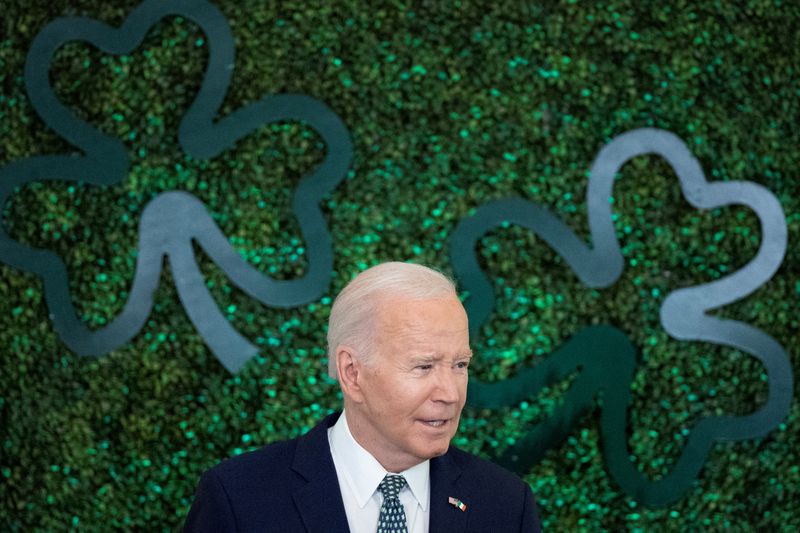
By Trevor Hunnicutt
WASHINGTON (Reuters) -President Joe Biden signed a new executive order on Monday that expands U.S. government research on women's health, while pledging $200 million next year to better understand issues, including sexual and reproductive conditions.
Biden is also ordering his administration to report on progress they are making to erase gender gaps in research and to study how to use artificial intelligence to improve women's health research, according to a White House summary of the order.
"I’m going to make sure women’s health is prioritized across the government," Biden told a room full of women, including actress Halle Berry and former California First Lady Maria Shriver at the White House.
The National Institutes of Health is also launching a new effort around menopause and the treatment of menopausal symptoms that will identify research gaps and work to close them, aides say.
Women globally live 5 years longer than men on average but spend 25% more of their lives in poor health, according to the World Economic Forum and the McKinsey Health Institute. They remain underrepresented in clinical trials and conditions affecting women are researched less than those that impact men.
The executive order will require medical research to better track differences between women and men, aides say.
"Medications, treatments and medical school textbooks are based on men and their bodies but that ends today. Finally, women will get the health care they deserve," First Lady Jill Biden told the crowd.
Biden has asked Congress for $12 billion in new funding for women's health research, but new financial commitments are hard to pass in a politically divided legislature during an election year.
The administration will spend the $200 million investment announced on Monday during the 2025 fiscal year, which starts this October, if Congress grants the funding levels Biden has requested.
The Democrat is seeking another four-year term in November's election against Republican candidate former President Donald Trump.
Women make up more than half of the electorate and Democrats think attacks on women's healthcare could animate voters in the aftermath of the U.S. Supreme Court overturning Roe v. Wade abortion rights in 2022.
"At this moment in states across our nation we are witnessing a full on attack against hard fought hard won freedoms and rights, including the right of women to make decisions about their own body," Vice President Kamala Harris said.

